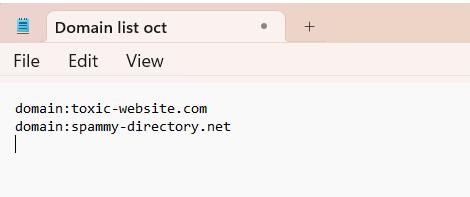When it comes to improving your website’s search engine ranking, the quality of your backlink profile is crucial. While high-quality backlinks can boost your SEO efforts, toxic backlinks can drag your website down in search results. In this blog post, we’ll explore the importance of disavowing toxic backlinks and provide you with a step-by-step guide on how to do it effectively.
What Are Toxic Backlinks?
Toxic backlinks, also known as spammy or harmful backlinks, are links from low-quality, irrelevant, or suspicious websites. These links can negatively impact your site’s SEO and reputation. Common sources of toxic backlinks include link farms, spammy directories, and websites with a poor reputation.
Why Should You Disavow Toxic Backlinks?
Disavowing toxic backlinks is essential for the following reasons:
- Avoiding Penalties: Search engines like Google may penalize your website for having a large number of toxic backlinks.
- Protecting Your Reputation: Toxic backlinks can associate your site with spammy or malicious websites, damaging your online reputation.
- Improving SEO: Removing toxic backlinks can lead to a significant improvement in your website’s search engine ranking.
How to Disavow Toxic Backlinks:
Follow these steps to disavow toxic backlinks and clean up your backlink profile:
Step 1: Identify Toxic Backlinks
Use tools like Google Search Console, Ahrefs, or SEMrush to identify toxic backlinks pointing to your website. Create a list of these harmful links.
Step 2: Create a Disavow File
Create a text file (typically in .txt format) where you’ll list the toxic backlinks you want to disavow. The format should look like this:

Step 3: Submit the Disavow File
Access your Google Search Console account and navigate to the Disavow Links tool. Upload the disavow file you created in Step 2. Google will then consider these links as unassociated with your website.
Step 4: Monitor Progress
Regularly monitor your backlink profile to ensure that the toxic backlinks have been disavowed and are no longer affecting your site’s SEO.
Disavowing toxic backlinks is a crucial step in maintaining a healthy backlink profile and improving your website’s SEO. By following this step-by-step guide, you can protect your site from penalties, enhance your online reputation, and boost your search engine ranking. Remember that SEO is an ongoing process, so periodic backlink audits are essential to keep your site in top shape.
![[at] Marketing](https://atmarketing.ca/wp-content/uploads/2022/02/logo-slogan.png)